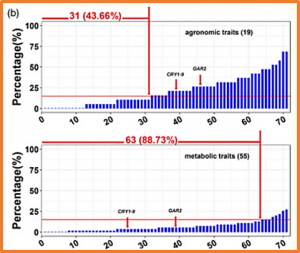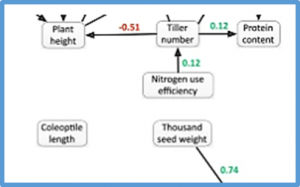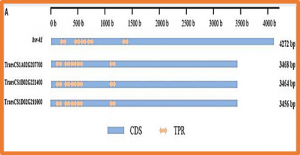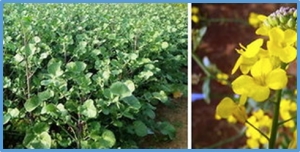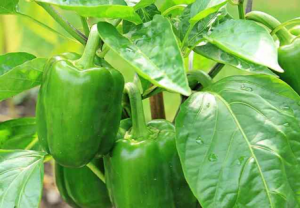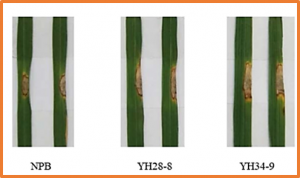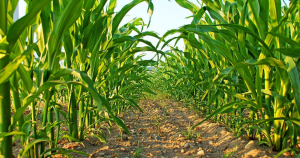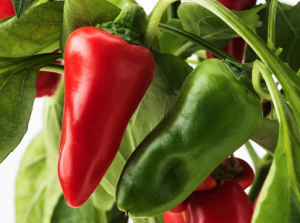Low grain moisture at harvest is crucial for safe production, transport and storage, but the genetic architecture of this trait in maize (Zea mays) remains elusive. Here, we measured the dynamic changes in grain moisture content in an association-mapping panel of 513 diverse maize inbred lines at five successive stages across five geographical environments. Genome-wide association study (GWAS) revealed 71 quantitative trait loci (QTLs) that influence grain moisture in maize.
Breeding crop cultivars with optimal value across multiple traits has been a challenge, as traits may negatively correlate due to pleiotropy or genetic linkage. For example, grain yield and grain protein content correlate negatively with each other in cereal crops. Future crop breeding needs to be based on practical yet accurate evaluation and effective selection of beneficial trait to retain genes with the best agronomic score for multiple traits.
Blast is caused by the host-specific lineages of the fungus Magnaporthe oryzae and is the most important destructive disease in major crop plants, including rice and wheat. The first wheat blast outbreak that occurred in Bangladesh in 2016 and the recent epidemic in Zambia were caused by the M. oryzae Triticum (MoT) pathotype, a fungal lineage belonging to M. oryzae. Although a few reported wheat cultivars show modest resistance to MoT, the patterns of genetic variation and diversity of this pathotype make it crucial to identify additional lines of resistant wheat germplasm.
Minimally evolved codes are constructed here; these have randomly chosen standard genetic code (SGC) triplets, completed with completely random triplet assignments. Such “genetic codes” have not evolved, but retain SGC qualities. Retained qualities are basic, part of the underpinning of coding. For example, the sensitivity of coding to arbitrary assignments, which must be < ∼10%, is intrinsic. Such sensitivity comes from the elementary combinatorial properties of coding and constrains any SGC evolution hypothesis
The production of a new allohexaploid Brassica crop (2n = AABBCC) is increasingly attracting international interest: a new allohexaploid crop could benefit from several major advantages over the existing Brassica diploid and allotetraploid species, combining genetic diversity and traits from all six crop species with additional allelic heterosis from the extra genome. Although early attempts to produce allohexaploids showed mixed results
Pepper yellow leaf curl disease caused by begomoviruses seriously affects pepper (Capsicum spp.) production in a number of regions around the world. Ty genes of tomato, which confer resistance to the tomato yellow leaf curl virus, are the only begomovirus resistance genes cloned to date. In this study, we focused on the identification of begomovirus resistance genes in Capsicum annuum.
The functions of ubiquitin-conjugating enzymes (E2) in plant immunity are not well understood. In this study, OsUBC26, a rice ubiquitin-conjugating enzyme, was characterized in the defence against Magnaporthe oryzae. The expression of OsUBC26 was induced by M. oryzae inoculation and methyl jasmonate treatment. Both RNA interference lines and CRISPR/Cas9 null mutants of OsUBC26 reduced rice resistance to M. oryzae.
The transition from phenotypic to genome-based selection requires a profound understanding of factors that determine genomic prediction accuracy. We analysed experimental data from a commercial maize breeding programme to investigate if genomic measures can assist in identifying optimal calibration sets for model training. The data set consisted of six contiguous selection cycles comprising testcrosses of 5968 doubled haploid lines genotyped with a minimum of 12,000 SNP markers.
Flowering time is a key trait for cereal adaptation that is controlled by a complex genetic background in maize. The effect of multiple alleles from a quantitative trait locus (QTL) on flowering time remains largely unknown. Here, we fine-mapped a major QTL for flowering time on maize chromosome 10 corresponding to ZmCCT, where a new allele with a 4.2-kilobase (kb) transposable insertion was present in the intron.
Fruit orientation is an important horticultural and domesticated trait, which is controlled by a single semi-dominant gene (up) in pepper. However, the gene underlying up locus has not yet been identified. In this study, the previously detected major QTL UP12.1 was firstly verified using a backcross population (n = 225) stem from the cross of BB3 (C. annuum) and its wild relative Chiltepin (C. annuum var. glabriusculum) using BB3 as the recurrent parent.


 Curently online :
Curently online :
 Total visitors :
Total visitors :
